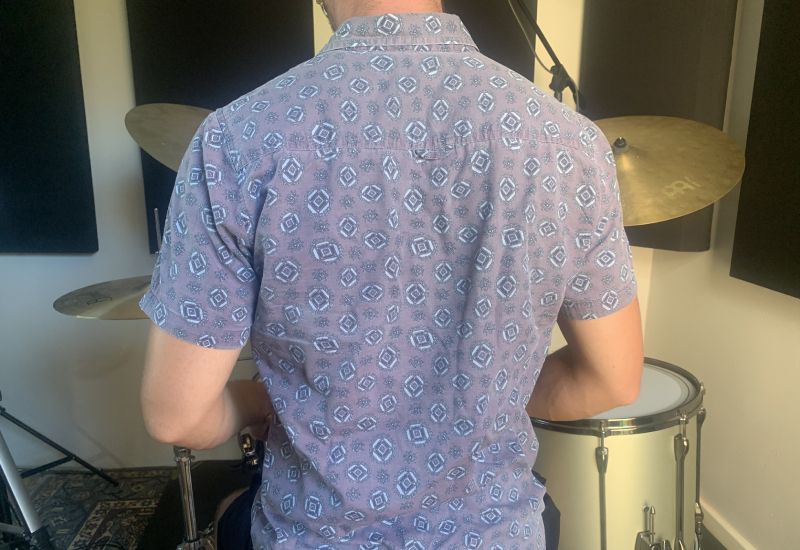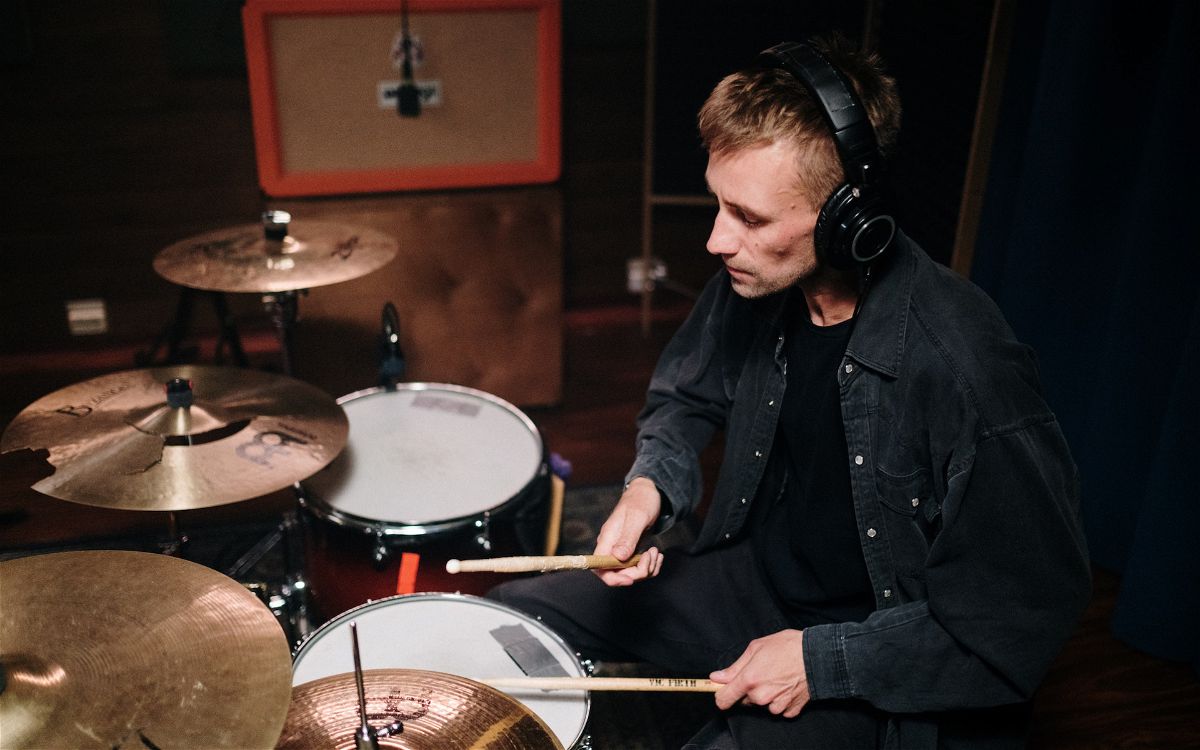When you play the drums, there are various ways of holding your drumsticks. The official ways are known as matched grip and traditional grip, and the variations of matched grip are called American grip, German grip, and French grip.
In this guide, we’re going to take a deep dive into what French grip is all about. It’s arguably one of the least common grips for drummers, but it offers several major benefits.
I’ll explain how to French grip, and I’ll give you some tips on how to improve your drumming with it.
Contents
What is French Grip in Drumming?
French grip is the go-to grip when you want to mostly utilize your fingers to play the drums. When drumming, you have the choice of using your fingers, wrists, or arms, and you can play some amazing things when you use your fingers.
French grip is very distinct, as it will have you facing your palms toward each other when you play. This gives you more control over your fingers, allowing you to leverage them to play various strokes.
While this grip isn’t the most common among drummers, you’ll find that most classical percussionists use it. It allows you to play with more subtlety and finesse, making it work very well in that style.
Why Do Drummers Use French Grip?
The French grip technique is well-suited for intricate and nuanced playing.
It is commonly used in styles of drumming that require delicate finger control and fast stick work, such as jazz, classical, and orchestral drumming.
Compared to other grip techniques like the matched grip or traditional grip, the French grip allows drummers to produce a lighter touch and greater control over the stick rebound.
This means it is particularly useful for playing delicate passages or executing intricate rudiments and drum patterns.
How to Use French Drum Stick Grip

Positioning Your Fingers
The first step to setting up the French grip is to face your palms toward each other. Once you’ve done that, you can place your fingers. The sticks should rest on the pointer fingers while your thumbs keep them secure.
Your thumbs will lay along the shafts of the sticks, and your pointer fingers will act as a balance point for movement.
Make sure to find the perfect spot where the sticks can balance and feel comfortable, and remember that French grip is all about balancing the stick between your thumb and index finger.
Your middle finger, ring finger, and pinky finger will wrap lightly underneath each stick. Be sure not to wrap them too firmly, as you want your sticks to move freely.
Positioning Your Body

You’ll need to point your elbows slightly outward to play with a French grip on the drums. This is so that the drum sticks can still hit the center of each drum head.
The most common thing to do is create an imaginary triangle that connects your hand, elbow, and shoulder.
Every other part of your body can be positioned in the same way that you would have it with all the other stick grip types.
The outward elbows may feel quite weird at first, but you’ll get used to them the more you use this grip when playing a drum set.
Once you have the finger and body positioning, you’re all set to play.
Tips for Improving Your French Grip Drumming

Rudiments
Playing rudiments on a practice pad, snare drum, and around the drum kit is the best way to solidify technique, so you should focus on playing rudiments using French grip.
Single strokes are the best rudiment to start with, as they’ll allow you to feel out the grip and get used to playing with it. You can make minor adjustments if you see that something is off.
Double strokes are the next rudiment to play, and here’s where you’ll easily feel the benefits of using French grip. Since your fingers are at the bottom of the sticks, you can use them to play double strokes a lot easier than other grips.
The last rudiment to play is a single paradiddle. This combines the previous two, so you’ll get a good used to switching between various stickings while using French grip.
Switching Between Other Grips
If you know how to use other drum stick grips, you should play rudiments repetitively while switching between the grips.
Playing singles with German grip and then switching to French grip will help you understand the distinct differences between the two. It will also force you to remember what to do with your hands as your strokes continue.
You can even use French grip in one hand while using American, German, or traditional grip in the other.
This is what a lot of drummers do, as it feels great to play cymbals with French grip, but you lose a bit of power when playing drums with it.
Benefits of French Grip for Drumming
Speed
The biggest benefit of using French grip is that you can play patterns faster when utilizing your fingers compared to your arms and wrists.
Your fingers can perform micro-movements, and that allows you to play quicker strokes.
Drummers who play blazing-fast singles and doubles around the kit are typically using French grip when doing so.
You’ll get the most mileage out of your double strokes if you use French grip, as your fingers can do a lot more than your wrists in that area.
Finger Control
Drumming is all about developing control over your arms, wrists, and fingers. When you use French grip, you develop greater finger control, and that will benefit your overall drumming style even when you’re not using French grip.
However, it’s not a great idea to use French grip when playing at very low tempos, as you’ll get more control from using your wrists for that.
Drummers to Watch Who Use French Grip
As I said earlier, most drummers use French grip interchangeably with German and American grip. However, there are a few drummers who show a preference for it. You can watch them play and see how they leverage the grip to perform certain things.
Here are a few to check out:
- David Garibaldi
- Todd Sucherman
- Benny Greb
Conclusion
One last thing to mention about French grip is that it’s the best grip to use with your right hand if your ride cymbal is positioned quite high.
It will allow you to rotate your wrist to play the ride instead of lifting your whole arm to reach it. That’s another reason why you’ll see a lot of drummers use it, whether they play with traditional or matched grip.
It’s well worth putting the time into learning how to use French grip. It will widen your skillset, and that will allow you to play more things on the drums.









